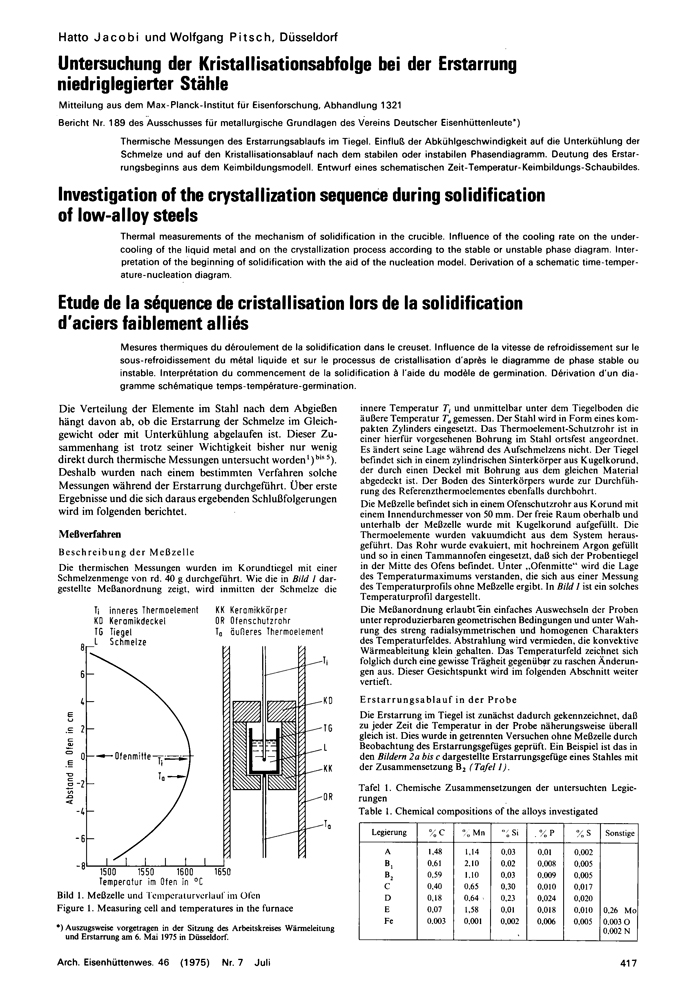Einfluß des Molybdängehaltes und der Gefügezusammensetzung auf die Zeitstandfestigkeit warmfester Chrom-Molybdän-Nickel-Vanadin-Stähle
Abstract
enZeitstandversuche bis 30 000 h bei 500 und 550 °C an neun Versuchswerkstoffen mit rd. 0,30% C, 0,68% Mn, 1,25% Cr, 0,60% Ni und 0,35% V sowie mit 0,11, 0,30, 0,55, 0,86 und 1,15% Mo nach Wärmebehandlung wie im Kern von Turbinenwellen mit 150 bis 1200 mm Dmr. Einfluß des Molybdängehaltes auf die Zeitstandfestigkeit bei reinem Zwischenstufengefüge und bei zunehmenden Ferrit- und Perlitanteilen.
Abstract
enCreep rupture tests lasting up to 30 000 h at 500 and 550 °C on nine experimental materials with about 0.30% C, 0.68% Mn, 1.25% Cr, 0.60% Ni and 0.35% V and also 0.11, 0.30, 0.55, 0.86 and 1.15% Mo after heat treatment as in the core of turbine shafts with 150 to 1200 mm diameter. Influence of the molybdenum content on the creep rupture strength for pure bainite and for increasing ferrite and pearlite portions.
Abstract
frEssais de fluage allant jusqu'à 30000 h à 500 et 550 °C sur neuf matériaux expérimentaux contenant env. 0,30% C, 0,68% Mn, 1,25% Cr, 0,60% Ni et 0,35% V ainsi que 0,11, 0,30, 0,55, 0,86 et 1,15% Mo après traitement thermique comme dans le coeur des arbres de turbine à diamètre de 150–1200 mm. L'influence de la teneur en molybdène sur la résistance au fluage pour une pure structure bainitique et pour des proportions augmentantes de ferrite et perlite.




